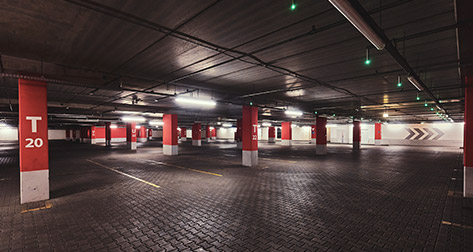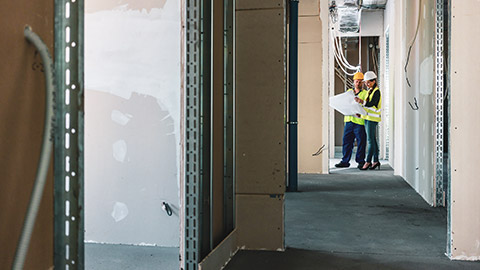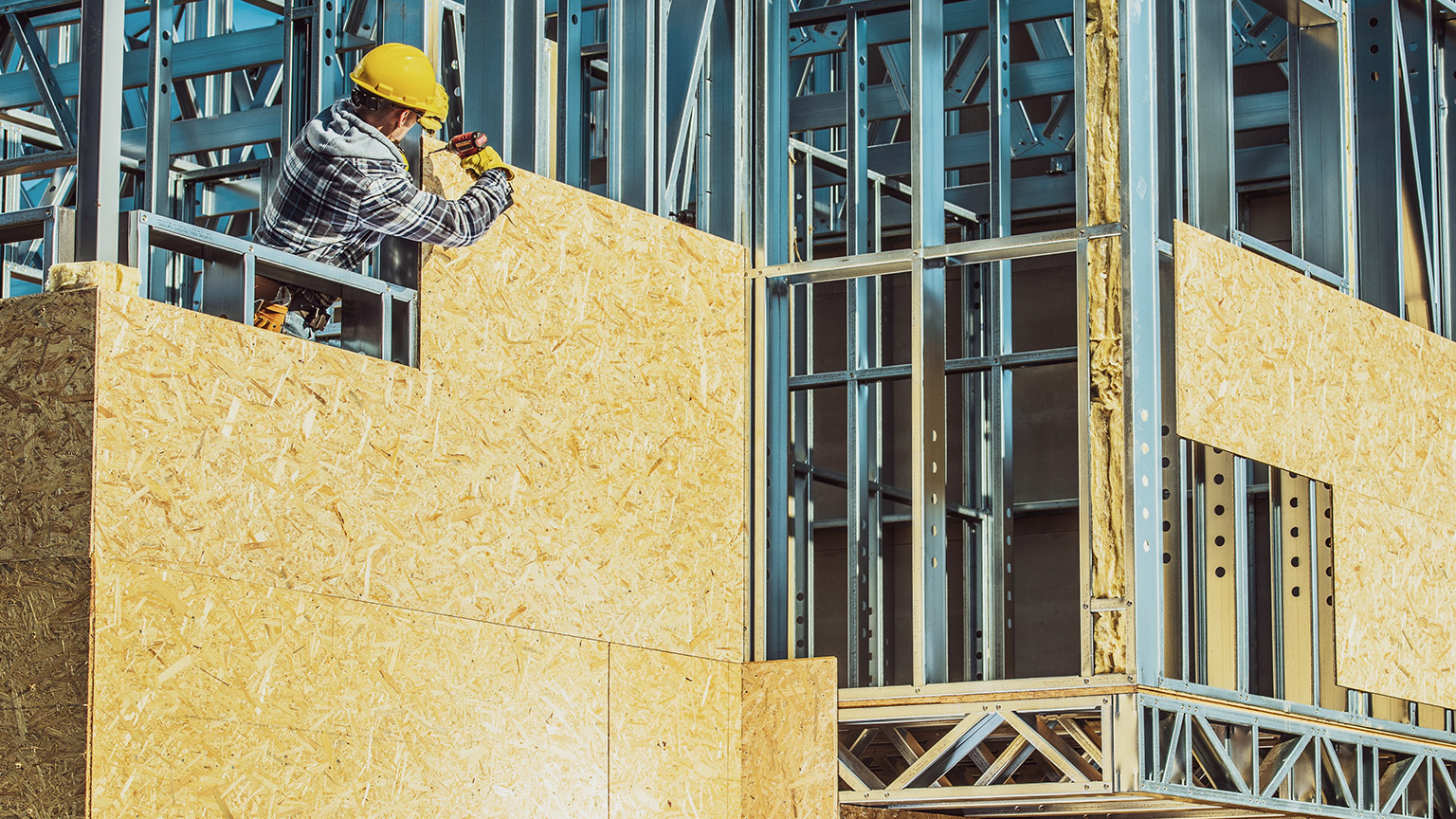This module covered the necessary information to understand and gain the knowledge to access, interpret, and apply relevant building codes and standards to the construction process applicable to National Construction Code (NCC) Class 1 and 10 building projects. In this module, you learnt how to classify buildings, determine construction compliance requirements from NCC, and apply fire protection requirements to Class 1 and 10 building projects.
Volumes of the NCC
The NCC incorporates all building work requirements into a single code containing three volumes. The Building Code of Australia (BCA) is Volumes One and Two, and the Plumbing Code of Australia (PCA) is Volume Three.
The Volumes of the NCC covers the following building classifications:
- Volume 1: covers the technical design and construction requirements for all Class 2 to 9 buildings (multi-residential, commercial, industrial, and public assembly buildings) and all their associated structures.
- Volume 2: covers the technical design and construction requirements for certain residential and non-habitable buildings and structures, specifically Class 1 and 10 buildings.
- Volume 3: (Plumbing Code of Australia) pertains to plumbing and drainage system of all building classifications.
Australian Standards
Australian Standards (AS) are documents that have been specifically created to outline the specifications that relate to building and construction procedures and products to make sure that they comply with safety and performance standards. Construction procedures are a series of steps followed in a regular definite order to accomplish a construction goal. An example of this is the procedure for cladding a window.
Behaviour of structures under stress
Building structures should be designed using materials to withstand different forces such as compression, tension, bending, torsion, shear and combinations of these forces.
Compression
Compression is the application to different points of a structure of balanced inward ('pushing') forces. Materials such as concrete are often used to withstand compression forces.
Tension
Tension is the application of outward ('pulling') forces on a structure. Steel is often used to withstand tension forces.
Bending
Bending is the forming or forcing of a structure into a curve or angle. Part of the material is under compression and part under tension, so composite materials may be preferred in this situation.
Torsion
Torsion is a twisting or turning force on a structure. Being a more complicated force to deal with, careful design and material selection are important.
Shear
A shear force is a sliding force. One part of the structure has a force in one direction, and another part has a force in the opposite direction. Careful design and material selection are required to withstand shear force.
A combination of these forces is a major cause of the decline of structures' integrity by causing deformation, stiffness, shortening, buckling, breaking, and failure of structures to support themselves and serve their purpose.
Building designers need to be aware of these different forces, and through the calculation of stress and strain, suitable construction materials can be selected. Construction materials have different stress-strain characteristics.
Stress
Stress is the term for the amount of force applied divided by the area over which the force is applied.
Strain
Strain is the ratio between the amount of deformation (due to stress) and the structure's original length.
Australian Standards and other documentation will contain provisions and requirements on ensuring that buildings remain water-resistant and can withstand elements such as stress and exposure.
Codes of states and territories
Some states and territories also have their own codes relating to residential building and construction projects. Examples of these are the Queensland Development Code, South Australia (SA)’s residential development code, and Western Australia’s residential design codes.
Some of these codes are specific and only apply to the states and territories where they are made for.

Building classes
Here are the building classifications as defined by the NCC:
| Class | Sub-class | Definition |
|---|---|---|
| 1 | Class 1 buildings are dwellings | |
| 1a | One or more buildings forming a single dwelling like:
|
|
| 1b | One or more buildings which together form:
|
|
| 2 | A building containing two or more sole-occupancy units. Each unit must be a separate dwelling. | |
| 3 | Class 3 buildings are residential buildings other than Class 1 or 2. These are long-term or transient living accommodations for unrelated people. These include the following:
|
|
| 4 | A Class 4 building is the only dwelling or residence within any Class 5, 6, 7, 8 or 9 buildings. | |
| 5 | An office building used for professional or commercial purposes, except for buildings of Class 6, 7, 8 or 9. Examples include:
|
|
| 6 | Buildings that directly sell goods by retail or supply services to the public, such as:
|
|
| 7 | 7a | Carparks |
| 7b | The following buildings are classified under Class 7b:
|
|
| 8 | These are process-type buildings such as:
|
|
| 9 | Buildings of public nature | |
| 9a | Healthcare buildings in which occupants are either:
|
|
| 9b | Assembly buildings used for social, theatrical, political, religious, or civil purposes. The following are examples of Class 9b buildings:
|
|
| 9c | An aged care building. An aged care building is defined as a residential accommodation for elderly people who are:
|
|
| 10 | Non-habitable buildings or structures | |
| 10a | Sheds, carports, and private garages | |
| 10b | Structures like:
|
|
| 10c | Private bushfire shelters |
Relevant NCC Performance Requirements
Building classifications determine the Performance Requirements that you must follow in any given project. Some of the Performance Requirements are only applicable to certain building classifications. Always check with the NCC or an Appropriate Authority if you are unsure which requirements you must apply to your building. Examples include energy efficiency, damp and weatherproofing, fire Safety, health and amenity, structure, safe movement and access and ancillary provisions.
Achieving compliance with NCC Performance Requirements
There are three different ways to achieve compliance with the NCC Performance Requirements. Each method has its uses and may not always be the most suitable option.
- A Performance Solution is one of the choices to achieve compliance with the Performance Requirements of the NCC. This is a tailored solution for a given project situation. This solution is flexible in achieving the outcomes and encourages the use of innovation in design and technology.
- A Deemed-to-Satisfy (DTS) Solution (also known as a Prescriptive Solution) is a standard way to demonstrate compliance with the Performance Requirements. However, there are times when a DTS Solution to a given problem does not exist or does not apply to certain building designs. Sometimes, a unique or site-specific solution is preferred or necessary. In these instances, a Performance Solution may be developed and used.
- A DTS Solution is achieved if you follow all relevant DTS Provisions in the NCC. DTS Provisions tell you what, when, and how to do something to meet the Performance Requirements. These include the materials, components, design factors, and construction methods needed to meet the Performance Requirements.
Assessment methods to determine compliance with Performance Solutions
There are four types of Assessment Methods that can be used to determine compliance with Performance Solutions and Deem-to-Satisfy Solutions. These are:
- Evidence of suitability
- Expert judgement
- Verification methods
- Comparison with Deemed-to-Satisfy Provisions
Certificate of conformity
A Certificate of Conformity is a certificate that states an item or product meets the relevant standard. An independent review must be conducted to issue that certificate; however, it is up to the State, Territory or relevant authority to accept these certificates as suitable evidence.
Complete documentation to meet NCC requirements
A full copy of the original certificate, report, or document must constitute any copy of the documentary evidence submitted. Inspection documentations are sometimes needed, like a final inspection certificate. To complete the relevant documentation, all the compliance requirements fulfilled by the construction must be documented thoroughly.
Difference between passive and active fire control elements
Passive fire control elements involve the use of suitable materials (e.g. fire-resisting elements and fire doors) in the construction of a building to improve structural stability and reduce the likelihood of collapse. Unlike active fire control elements that aim to extinguish a fire, passive fire control elements aim to contain the fire to its point of origin and prevent it from spreading to the other parts of the building.

Standards Australia, in partnership with the Australian Building Codes Board (ABCB), produced an online dictionary of terms for the building and plumbing industry. The dictionary can be accessed here.
Below you can see a list of frequently used construction-related terms explained:
| Term | Definition |
|---|---|
| Air brick | Ventilation built into brickwork to provide ventilation through the wall |
| Agreement | A contract between two or more parties, either written or verbal |
| Arris | A sharp corner formed by the join of two surfaces along a length of timber or brick |
| Australian Standard | The approved standard for material, equipment, technique, or procedure as set down by the Standards Australia International Limited (SAI Ltd) |
| Building trades | All trades which have a part in the construction of a building |
| Carpentry | Trade of preparing, cutting, and fixing timber in building construction |
| Cladding | Any material used to face a building or structure |
| Contractor | One who agrees by written agreement or contract to supply materials and perform certain types of work for a specified sum of money |
| Cul de sac | An access street with a blind end usually in the form of a turning space for vehicles |
| Datum | A predetermined level on a site from which all other levels are established |
| Dimension | A measure of distance |
| Eave | The lower part of a roof that overhangs the walls |
| Flush | A smooth-faced door |
| Gable | The triangular end of a house formed at the end of a pitched roof, from eaves level to apex |
| Housing | Recess cut across the face of a piece of timber to receive the end of another piece |
| Housing Provisions Standard |
The Housing Provisions Standard is a significant format change to the NCC and it is part of NCC 2022. This new ABCB Standard is introduced to align the structure of the NCC Volumes. It represents the Acceptable Construction Practices’ (ACPs) content previously found in NCC 2019 Volume Two, Section 3. Like the ACPs, it’s referenced by the Deemed-to-Satisfy (DTS) Provisions in Volume Two. To make it easier to understand this change, a more traditional version combining NCC Volume Two and the new Housing Provisions Standard into one document can be downloaded. |
| Matrix | The mixture of sand and cement that binds together the aggregate of concrete |
| National Construction Code (NCC) | The NCC, published by the Australian Building Codes Board, incorporates all building work requirements into a single code containing three volumes. NCC 2022 is proposed to come into effect from 1 September 2022 and it will allow transition periods for states and territories for some requirements. |
| Pane | Single piece of glass in a window or door |
| Pier | The vertical member of base structure |
| Profile | A frame set up on a building site on which is indicated the position of the building |
| Reduced level | Elevation of a point relative to a given datum |
| Waterproof | Materials and construction which will prevent water from passing through walls and joints |

- To access the National Construction Code (NCC) 2019 Volumes One, Two, and Three, register to NCC’s website and download the documents free of charge.
- A comprehensive summary of the updated NCC 2022 can be accessed here, including the newly introduced Housing Provisions Standard.
- NCC Tutor is a suite of educational modules designed for educators and students, designed and published by ABCB. The recorded lessons are a video version of each NCC Tutor module and it provides a detailed explanation about NCC volumes, energy efficiency provisions, fire safety and WaterMark. The playlist containing 13 videos is available here.
- For more information on standards used in Australia, you can click here. The Concrete structures AS 3600-2018 standard provides requirements for construction projects that involve concrete structures and members. It also lays down guidelines for pedestal footings.
- Guide to hazardous paint management Lead paint in residential, public and commercial buildings AS/NZS 4361.2:2017: This standard offers guidelines on non-industrial facilities for the management of lead paint. It also includes guidance on ways to assess the presence and amount of lead on a building and how to choose an effective management strategy.
- Steel structures AS 4100:2020: This standard sets out minimum specifications for the construction aspects of the manufacture and the alteration of the steelwork in compliance with the design method.
- You can access ABCB's Handbook for Performance Solution Processes here.
- You can access a sample CodeMark Certificate of Conformity here.
- You can access a sample of an engineering certificate where an insulation product has been tested for non-combustibility here.
- You can access ABCB's handbook on evidence of suitability here.
The following table shows the Australian Standards commonly used for building and construction. It is often worth viewing a summary of the content online to check if it covers what you are expecting and that you have the most recent version. Australian Standards are available for purchase through the Standards Store or distribution partners' websites.
| No. | Date | Title |
|---|---|---|
| AS/NZS ISO 717 | 2004 | Acoustics — Rating of sound insulation in buildings and of building elements — Airborne sound insulation |
| AS ISO 717 Part 2 | 2004 | Acoustics — Rating of sound insulation in buildings and of building elements — Impact sound insulation |
| AS 1056 Part 1 | 1991 | Storage water heaters — General requirements (incorporating amendments 1, 2, 3, 4 and 5) |
| AS/NZS 1170 | 2002 | Structural design actions — General principles (incorporating amendments 1, 3 and 4) |
| AS/NZS 1170 | 2011 | Structural design actions — Wind actions (incorporating amendments 1, 2, 3, 4 and 5) |
| AS 1191 | 2002 | Acoustics — Method for laboratory measurement of airborne sound transmission insulation of building elements |
| AS 1273 | 1991 | Unplasticized PVC (UPVC) downpipe and fittings for rainwater |
| AS 1288 | 2006 | Glass in buildings — Selection and installation |
| AS 1289.6.3.3 | 1997 | Methods of testing soils for engineering purposes — Method 6.3.3: Soil strength and consolidation tests — Determination of the penetration resistance of a soil — Perth sand penetrometer test (incorporating amendment 1) |
| AS 1397 | 2011 | Continuous hot-dip metallic coated steel sheet and strip — Coatings of zinc and zinc alloyed with aluminium and magnesium (incorporating amendment 1) |
| AS 1428 | 2009 | Design for access and mobility — General requirements for access |
| AS 1530 | 1994 | Methods for fire tests on building materials, components and structures — Combustibility test for materials |
| AS 1562 Part 1 | 2018 | Design and installation of sheet roof and wall cladding — Metal |
| AS 1657 | 2018 | Fixed platforms, walkways, stairways and ladders — Design, construction and installation |
| AS/NZS 1664 | 1997 | Aluminium structures — Limit state design (incorporating amendment 1) |
| AS 1668 | 2015 | The use of ventilation and air conditioning in buildings — Fire and smoke control in buildings (incorporating amendment 1) |
| AS 1670 | 2018 | Fire detection, warning, control and intercom systems |
| AS/NZS 1680 Part 0 | 2009 | Interior lighting — Safe movement |
| AS 1684 | 2010 | Residential timber- framed construction |
| AS 1720 | 2010 | Timber structures |
| AS 1735 | 1986 | Lifts, escalators and moving walks |
| AS/NZS 1859 Part 4 | 2018 | Reconstituted wood- based panels |
| AS 1860 Part 2 | 2006 | Particleboard flooring — Installation (incorporating amendment 1) |
| AS 1905 Part 1 | 2015 | Components for the protection of openings in fire-resistant walls |
| AS 1926 Part 1 | 2012 | Swimming pool safety |
| AS 2047 | 2014 | Windows and external glazed doors in buildings |
| AS 2049 | 2002 | Roof tiles (incorporating amendment 1) |
| AS 2050 | 2018 | Installation of roof tiles |
| AS 2118 | 2017 | Automatic fire sprinkler systems |
| AS 2159 | 2009 | Piling — Design and installation (incorporating amendment 1) |
| AS/NZS 2179 Part 1 | 2014 | Specifications for rainwater goods, accessories and fasteners |
| AS/NZS 2269 Part | 2012 | Plywood |
| AS/NZS 2293 Part 1 | 2018 | Emergency lighting and exit signs for buildings |
| AS/NZS 2327 | 2017 | Composite structures |
| AS 2419 Part 1 | 2005 | Fire hydrant installations |
| AS 2441 | 2005 | Installation of fire hose reels (incorporating amendment 1) |
| AS 2444 | 2001 | Portable fire extinguishers and fire blankets — Selection and location |
| AS 2665 | 2001 | Smoke/heat venting systems — Design, installation and commissioning |
| AS/NZS 2699 Part 1 | 2000 | Built-in components for masonry construction |
| AS 2870 | 2011 | Residential slabs and footings |
| AS/NZS 2890 Part 6 | 2009 | Parking facilities |
| AS/NZS 2904 | 1995 | Damp-proof courses and flashings |
| AS/NZS 2908 Part 1 | 2000 | Cellulose-cement products |
| AS/NZS 2918 | 2018 | Domestic solid fuel burning appliances |
| AS/NZS 3013 | 2005 | Electrical installations — Classification of the fire and mechanical performance of wiring system elements |
| AS/NZS 3500 Part 0 | 2003 | Plumbing and drainage |
| AS/NZS 3500 | 2018 | Plumbing and drainage |
| AS 3600 | 2018 | Concrete structures |
| AS/NZS 3666 | 2011 | Air-handling and water systems of buildings |
| AS 3700 | 2018 | Masonry structures |
| AS 3740 | 2010 | Waterproofing of domestic wet areas |
| AS 3786 | 2014 | Smoke alarms using scattered light, transmitted light or ionization (incorporating amendment 1 and 2) |
| AS 3959 | 2018 | Construction of buildings in bushfire-prone areas |
| AS/NZS 4020 | 2018 | Testing of products for use in contact with drinking water |
| AS 4055 | 2012 | Wind loads for housing (incorporating amendment 1) |
| AS 4072 | 2005 | Components for the protection of openings in fire-resistant separating elements |
| AS 4100 | 1998 | Steel structures |
| AS/NZS 4200 | 2017 | Pliable building membranes and underlays — Materials |
| AS 4200 Part 2 | 2017 | Pliable building membranes and underlays — Installation requirements (incorporating amendment 1) |
| AS/NZS 4234 | 2008 | Heated water systems |
| AS 4254 Part 1 | 2012 | Ductwork for air- handling systems in buildings — Flexible duct |
| AS 4254 Part 2 | 2012 | Ductwork for air- handling systems in buildings — Rigid duct |
| AS/NZS 4256 | 1994 | Plastic roof and wall cladding materials — General requirements |
| AS/NZS 4284 | 2008 | Testing of building facades |
| AS/NZS 4505 | 2012 | Garage doors and other large access doors (incorporating amendment 1) |
| AS 4552 | 2005 | Gas fired water heaters for hot water supply and/or central heating |
| AS 4586 | 2013 | Slip resistance classification of new pedestrian surface materials (incorporating amendment 1) |
| AS 4597 | 1999 | Installation of roof slates and shingles (Non- interlocking type) |
| AS/NZS 4600 | 2018 | Cold-formed steel structures |
| AS 4654 Part 1 | 2012 | Waterproofing membranes for external above-ground use — Materials |
| AS 4654 Part 2 | 2012 | Waterproofing membranes for external above-ground use — Design and installation |
| AS 4678 | 2002 | Earth-retaining structures |
| AS 4773 Part 1 | 2015 | Masonry in small buildings — Design (incorporating amendment 1) |
| AS/NZS 4859 | 2018 | Thermal insulation materials for buildings |
| AS 5113 | 2016 | Classification of external walls of buildings based on reaction-to-fire performance (incorporating amendment 1) |
| AS 5146 Part 1 | 2015 | Reinforced autoclaved aerated concrete — Structures (incorporating amendment 1) |
| AS 5216 | 2018 | Design of post-installed and cast-in fastenings in concrete |
| AS 5637 Part 1 | 2015 | Determination of fire hazard properties — Wall and ceiling linings |
| AS ISO 9239 Part 1 | 2003 | Reaction to fire tests for floorings — Determination of the burning behaviour using a radiant heat source |

